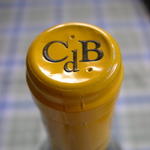 Random House Webster’s Dictionary defines balance as
Random House Webster’s Dictionary defines balance as
“a state of equilibrium or equipoise; equal distribution of weight,
amount, etc.” To wine lovers, the concept of balance isn’t all that
much different. A wine is said to be balanced when all of its
individual components — alcohol level, acidity, tannins (in red wine),
flavors and sugars (if present) — are in perfect harmony and none
overwhelms the others.
At Castello di Borghese Vineyard and Winery in Cutchogue, winemaker
Stan Schumacher is crafting just these types of wines — clean wines
with class and poise. I recently sipped some of his latest releases and
came away impressed. In general, they are so well balanced that he may
have been a world-class gymnast in a past life.
Often slandered because of its decidedly sweet cousin, white zinfandel,
rosé has made a bit of a comeback locally, with many producers making
crisp, refreshing versions that have infinitely more character than
their West Coast brethren. The Castello di Borghese Fleurette ($9), a
non-vintage rosé made with Pinot Noir and Pinot Blanc, is a bright,
pink-magenta that may look a bit like Koolaid, but it’s not your trashy
aunt’s rosé. The aromas and flavors are simple and fruity with
strawberry and cranberry, and while just off dry, subtle acidity brings
balance while a slightly creamy finish lingers. This isn’t as light and
refreshing as some rosé, but it’s nearly perfect with my wife’s spicy
homemade bean burgers.
Compared to many local Sauvignon Blanc bottlings, which are super-tart
and aggressive (a style I sometimes enjoy in the summer), Castello di
Borghese’s 2004 Founder’s Field Reserve Sauvignon Blanc ($24) is
controlled and clean. This pale straw yellow wine is slightly cloudy
(it’s unfiltered) and has a nose of lemons and kiwi. On the palate, it
is medium-to-full bodied and offers lemon, grapefruit and subtle baking
spice flavors with just a hint of fresh herbs on a pleasant, clean
finish.
If you’ve been reading this column for awhile, you’ve probably noticed
that I tend not to like oak-and-butter-soaked chardonnay, which is
usually the result of low-acid juice being barrel fermented and left to
sit in new oak for excessive lengths of time. Shumacher’s 2002 Barrel
Fermented Chardonnay ($22) does show significant oak character —
toasty, almost hardwood charcoal scents on the nose and creamy, toasty
vanilla flavors with hints of butter — but it’s not nearly as heavy or
flabby as many. I enjoyed the roasted pear and apple pie flavors in the
background and the long finish.
Far and away my favorite of CdB’s recent releases was the Castello di
Borghese 2002 Reserve Pinot Noir ($35). As close to “old vines” as you
can get on Long Island, the fruit for this wine came from Hargrave
Vineyard, our region’s founding winery. Richly aromatic, its nose
presents fresh cherries, wet gravel, sweet spices and vanilla. The
flavors are elegant and complex with cherries, minerals, baking spice,
cocoa and cedar intermingling in a smooth, refined structure.
Absolutely delicious, this wine received an A- in my blind tasting
against a similarly priced California Pinot Noir (which got a B+).
Castello di Borghese and its wines are yet another reason that I spend
so much time on Route 48 when I visit the wineries out east.
(This piece appeared in the 8/26 issue of Dan’s Papers)
